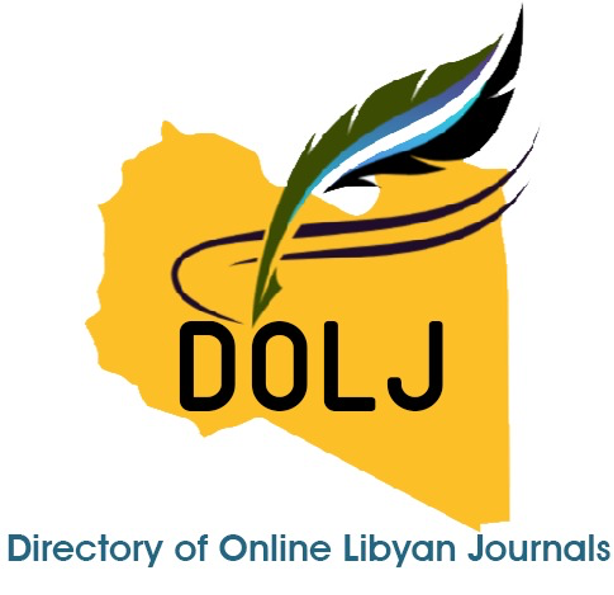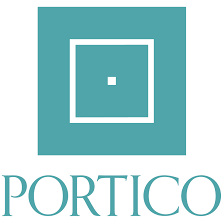Antibacterial activity of Plantago lanceolata and Helichrysum stoechas extracts on Escherichia coli and Pseudomonas aeruginosa
DOI:
https://doi.org/10.36602/jsba.2025.18.26%20الكلمات المفتاحية:
Plantago lanceolata, Helichrysum stoechas, Plant extraction, Soxhlet, antimicrobial activityالملخص
The use of herbal medicinal products has recently increased because of bacterial resistance to conventional antibiotics. Plantago lanceolata and Helichrysum stoechas used in traditional medicine due to their medicinal properties. This current study aimed to perform perform the in vitro antibacterial activity of the extracts obtained from the fresh leaves of P. lanceolata and dry H. stoechas against Gram-negative bacteria Escherichia coli and Pseudomonas aeruginosa isolated from patients by studying the inhibition of the growth of the pathogen E. coli and P. aeruginosa. The antibacterial activity of the ethanolic and aqueous decoction extracts of the plants was examined. The results indicated that there was no antibacterial activity of P. lanceolata and H. stoechas observed against Gram-negative bacteria used in this study. Therefore, further investigations and future experiments need to be carried out to determine the effect of these herbal extracts on other types of bacteria.
المراجع
References:
[1] Bassam. A, Ghaleb. A, Dauod. S, Kamel.
A, Moad. A (2005) Antibacterial activity of Rhus
coriaria. L extracts growing in Palestine. Journal of
Islamic Studies 13(2):147-153.
[2] Nascimento G. F; Locatelli J; Freitas P. C;
Silva G. L. (2000) Antibacterial activity of plant
31 Vol. 18 August 2024
extracts and phytochemicals on antibiotic-resistant
bacteria. Braz. J. Microbiol. 31 (4).
[3] Hassemer G (2019) Mediterranean
mysteries: notes on Plantago sect. Lancifolia
(Plantaginaceae). Phytotaxa.
423(3):11128.10.11646/phytotaxa.423.3.1
[4] Hassemer G, Bruun-Lund S, Shipunov AB,
Briggs BG, Meudt HM, Rønsted N (2019) The
application of high-throughput sequencing for
taxonomy: The case of Plantago subg. Plantago
(Plantaginaceae). Mol Phylogen Evol. 138:156–
73.10.1016/j.ympev.2019.05.01
[5] Drava G, Cornara L, Giordani P, Minganti
V (2019) Trace elements in Plantago Lanceolata L.,
a plant used for herbal and food preparations: new
data and literature review. Environ Sci Pollut Res.
26:2305–13.10.1007/s11356-018-3740-1
[6] European Medicine Agency. Assessment
report on Plantago lanceolata L., folium (2010),
Draft, Community herbal monograph on Plantago
lanceolata L. folium, (2011).
[7] Beara I. N., Lesjak M. M., Orčić D. Z., et al
(2012) Comparative analysis of phenolic profile,
antioxidant, anti-inflammatory and cytotoxic activity
of two closely-related Plantain species: Plantago
altissima L. and Plantago lanceolata L. LWT—Food
Science and Technology. 47(1):64–70.
doi: 10.1016/j.lwt.2012.01.001.
[8] Gálvez M., Martín-Cordero C., Houghton
P. J., Ayuso M. J (2005) Antioxidant activity of
methanol extracts obtained
from Plantago species. Journal of Agricultural and
Food Chemistry. 53(6):1927–1933.
doi: 10.1021/jf048076s.
[9] Smullen J., Koutsou G. A., Foster H. A.,
Zumbé A., Storey D. M (2007) The antibacterial
activity of plant extracts containing polyphenols
against Streptococcus mutans . Caries
Research. 41(5):342–349. doi: 10.1159/000104791.
[10] Ferrazzano F, Cantile T, Roberto L,
Ingenito A, Catania R, Roscetto E, Palumbo G,
Zarrelli A, Pollio A (2015) Determination of the In
Vitro and In Vivo Antimicrobial Activity on Salivary
Streptococci and Lactobacilli and Chemical
Characterisation of the Phenolic Content of
a Plantago lanceolata Infusion. Biomed Res Int.
2015:2015:286817.doi:10.1155/2015/286817.
[11] Monawer A, Mammani I (2023)
Antibacterial activity of ethanolic extracts of
Plantago major leaves against Pseudomonas
aeruginosa from burn infections. J Infect Dev
Ctries. 2023 Feb 28;17(2):276-280. doi:
10.3855/jidc.17576.
[12] Carini, M.; Aldini, G.; Furlanetto, S.;
Stefani, R.; Facino, R.M (2001) LC coupled to iontrap MS for the rapid screening and detection of
polyphenol antioxidants from Helichrysum stoechas.
J. Pharm. Biomed. Anal. 24, 517–526.
[13] Lavault, M.; Richomme, P (2004)
Constituents of Helichrysum stoechas variety
olonnense. Chem. Nat. Compd. 40, 118–121.
[14] Hussain M.S. , H.A. Azam F, Eldarrat
H, Alkskas I, Mayoof J, Dammona J, Ismail H, Ali
M, Arif M, Haque A (2020b) Anti-inflammatory,
analgesic activity and molecular docking studies of
Lanostanoic acid 3-O-α-D-glycopryranoside isolated
from Helichrysum stoechus against chemically
challenged experimental animal.
[15] Tutin T, Heywood V, Burges N,. Moore D,
Valentine D, Walters S, Webb D (1980) Flora
Europaea. Volume 5. Alismataceae to Orchidaceae
(Monocotyledones). Bulletin of the Torrey Botanical
Club. 107(4):556.DOI: 10.2307/2484091
[16] Giuliani C, Lazzaro L, Calamassi R,
Calamai L, Romoli R, Fico G, Foggi B, Lippi M
(2016) A volatolomic approach for studying plant
variability: the case of selected Helichrysum species
(Asteraceae). Phytochemistry. 130:128-
43.doi:10.1016/j.phytochem.2016.07.013
[17] Sobhy E-A and El-Feky S.S (2007)
Chemical Constituents and Antimicrobial Activity of
Helichrysum Stoechas .Asian Journal Plant ,6;692
695.DOI ;16,3923/ajps .2007.691.695
[18] Les, F.; Venditti, A.; Cásedas, G.; Frezza,
C.; Guiso, M.; Sciubba, F.; Serafini, M.; Bianco, A.;
Valero, M.S.; López, V (2017) Everlasting flower
(Helichrysum stoechas Moench) as a potential
source of bioactive molecules with antiproliferative,
antioxidant, antidiabetic and neuroprotective
properties. Ind. Crops Prod. 108, 295–302.
[19] Lister P.D., Wolter D.J., Hanson N.D
(2009)Antibacterial Resistant Pseudomonas
aeruginosa: Clinical Impact and Complex
Regulation of Chromosomally Encoded Resistance
Mechanisms. Clin.Microbiol.Rev. 22:582610.doi: 10
.1128/CMR.00040-09
[20] Singleton P. (1999) Bacteria in Biology,
Biotechnology and Medicine. 5th ed. Wiley;
Hoboken, NJ, USA: pp. 444–454.
[21] Frater Albertus (1974) the Alchmistry`s
handbook (Manual for Practical Laboratory
Alchemy). Paracelsus Research Society Salt Lake
City, Utah, U.S.A.
[22] Kumar, M., Kaur, P., Garg, R., Patil, R. K.,
& Patil, H. C. (2020). A study on antibacterial
property of curcuma longa–herbal and traditional
medicine. Adesh University Journal of Medical
Sciences & Research, 2(2), 103-108.
[23] Boyanova, L., Gergova, G., Nikolov, R.,
Derejian, S., Lazarova, E., Katsarov, N., Miltov, I.,
Krastev, Z., (2005) Activity of Bulgarian propolis
against 94 Helicobacter pylori strains in vitro by
32 Antibacterial activity of Plantago lanceolata and Helichrysum stoechas ……..
agar-well diffusion, agar dilution and disc diffusion
methods. J. Med. Microbiol. 54 (5), 481–483.
[24] Bauer, A.W., Kirby, W.M., Serris, J.C.,
Turck, M., (1996) Antibiotic susceptibility testing by
a standardized single disc method. Am. J. Clin.
Pathol. 45, 493–496.
]25 ]فتحي سالمة، فرج زغيل، محمد سعد، عبد الخا لق
الفيتوري، عبد الرازق الفاهم، محمد الفيل )2009 )دراسة تأثير
فاعلية بعض النباتات الطبية الليبية على بعض أنواع البكتيريا. مؤتمر
الخامس للتقنيات الحيوية صبراته
[26] Karakas F, Yildirim A, Turker A (2012)
Biological screening of various medicinal plant
extracts for antibacterial and antitumor
activities. Turk J Biol. 36(6):641–52
[27] Rahamouz-Haghighi S, Bagheri Kh,
Mohsen-Pour N, and Sharafi A (2022) in
vitro Evaluation of Cytotoxicity and Antibacterial
Activities of Ribwort Plantain (Plantago
Lanceolata L.) Root Fractions and Phytochemical
Analysis by Gas Chromatography-Mass
Spectrometry. Arch Razi Inst. 77(6): 2131–
2143. doi: 10.22092/ARI.2022.358045.2143
[28] Abbasi A, Maddah SM, ALI DS,
Kamalinejad M (2022) Antibacterial Activity of
Herbal Plantago major and Plantago lanceolata
extracts on Pseudomonas aeruginosa with emphasis
on Exotoxin A gene expression and Bioinformatics
approach. Research Square,
https:/doi.org/10.21203/rs.3.rs-1637465/v1
[29] Demir A , Taban B , Aslan M , Yesilada E,
and Aytac S (2009) Antimicrobial effect of
Helichrysum plicatum subsp. Plicatum.
Pharmaceutical Biology; 47(4): 289–297
[30] Rios J.L; Recio M.C; Villar A (1991)
Isolation and identification of the antibacterial
compounds from Helichrysum stoechas. Journal of
Ethnopharmacology. Volume 33, Issues 1–2, 51-55
[31] Orhan D, Cirak M, Külah C, Ergun F
(2002) Antimicrobial activity screening of some
Turkish medical plants. J Fac Pharm Gazi,
19(2):105-111
[32] Molnàr J, Gunics G, Mucsi J, Koltai M,
Petri I, Shoyama Y et al (1989) Antimicrobial and
immunmodulating effects of some phenolic
glycosides. Acta Microbiol Hun, 36(4):425-432
[33] Zubair M., Rumpunen K., Lindholm C.,
Nybom H. (2008a) Effect of leaf drying temperature
on phenolic compounds in Plantago major L.
(common plantain). International symposium on
modern approaches and techniques in agriculture to
ensure food security in Pakistan. Faisalabad,
Pakistan, Oct. 13–14, 2008.Poster presentation
[34] Tamura Y., Nishibe S. (2002) Changes in
the concentration of bioactive compounds in
plantain leaves. Journal of Agricultural and Food
Chemistry 50: 2514–2518.
[35] Albayrak S, Aksoy A, Sagdic O, Budak U
(2010) Phenolic compounds and antioxidant and
antimicrobial properties of Helichrysum species
collected from eastern Anatolia, Turkey. Turk J Biol.
34: 463-473
[36] Węglarz Z, Kosakowska O, Pióro-Jabrucka
E, Przybył J, Gniewosz M, Kraśniewska K,.
Szyndel M, Costa R, Bączek K (2022) Antioxidant
and Antibacterial Activity of Helichrysum
italicum (Roth) G. Don. from Central Europe.
Pharmaceuticals (Basel). 15(6): 735. doi:
10.3390/ph15060735
[37] Cohen, M.L. (1992) Epidemiology of drug
resistance: implications for a postantimicrobial era.
Science 257, 1050-1055.
[38] Sag˘dıç O, Kuscu A, Ozcan AM, Ozcelik S
(2002): Effects of Turkish spice extracts at various
concentrations on the growth of Escherichia coli
O157:H7. Food Microbiol 19: 473–480.
[39] Süzgeç S, Mericli AH, Houghton PJ,
Cubukcu B (2005): Flavonoids of Helichrysum
compactum and their antioxidant and antibacterial
activity. Fitoterapia 76: 269–27














